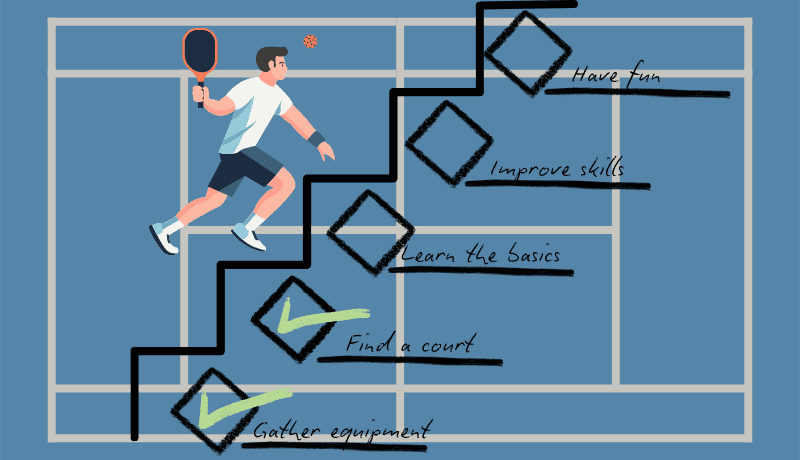So Guest List. Beginner’s Woodworking Checklist: 25 Essentials to Start Right
Learn woodworking the right way with a beginner’s checklist of 25 essential tools, workspace tips, and safety basics.
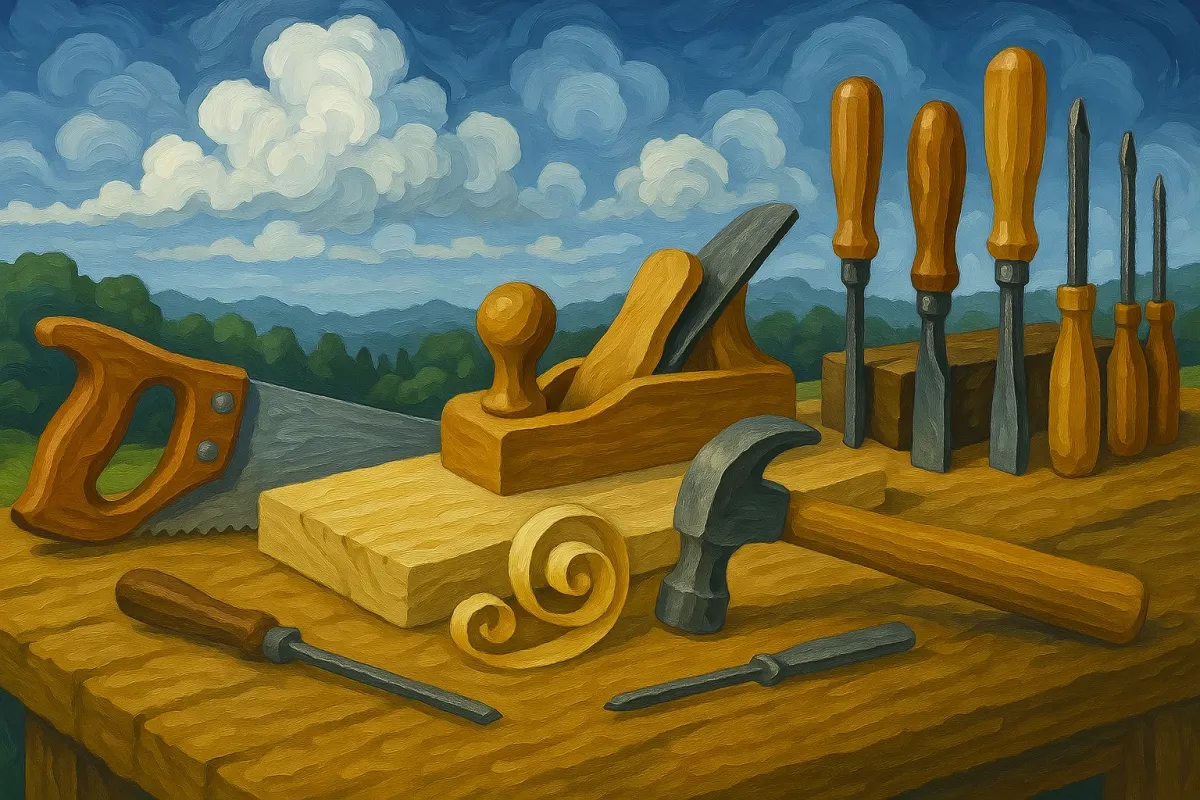
Happy to See Skilled Guests
I always enjoy interviewing or featuring guest posts from individuals who are knowledgeable in their fields. Moreover, there's something special about talking to those who create with their hands. A while ago, Michael helped us discover essential mechanic tools, and today we have another great guest.
Meet Travis, the author of the “Tekton Travis” blog. Here’s what Travis has to say about himself:
I am a husband, father, craftsman, builder, provider, and learner with a passion for working with my hands. I have spent nearly all of my life with tools in my hands and have a goal to grow and help others build the confidence to tackle projects on their own with a DIY frame of mind.
Now that we’re acquainted, let’s explore the essential checklists for the beginning woodworker.
Beginner’s Woodworking Checklist: 25 Essentials to Start Right
Starting woodworking? This no-fluff beginner’s woodworking checklist covers the 25 essential tools, workspace setup tips, and safety basics you need to build with confidence.
If you’re just getting into woodworking, it’s easy to feel overwhelmed. What tools do you need? How do you set up your space? And what should you actually learn first?
I’ve been in the trades my whole life, and I’ll tell you—starting simple and smart will save you time, money, and a lot of frustration. That’s why I created this no-fluff checklist to help you get started the right way.
Whether you're working out of a garage, spare room, or tiny shed, this guide will walk you through the gear, workspace, and basic know-how you actually need to start woodworking confidently.
Let’s dive in and get you building.
1. Get the Essential Tools and Gear
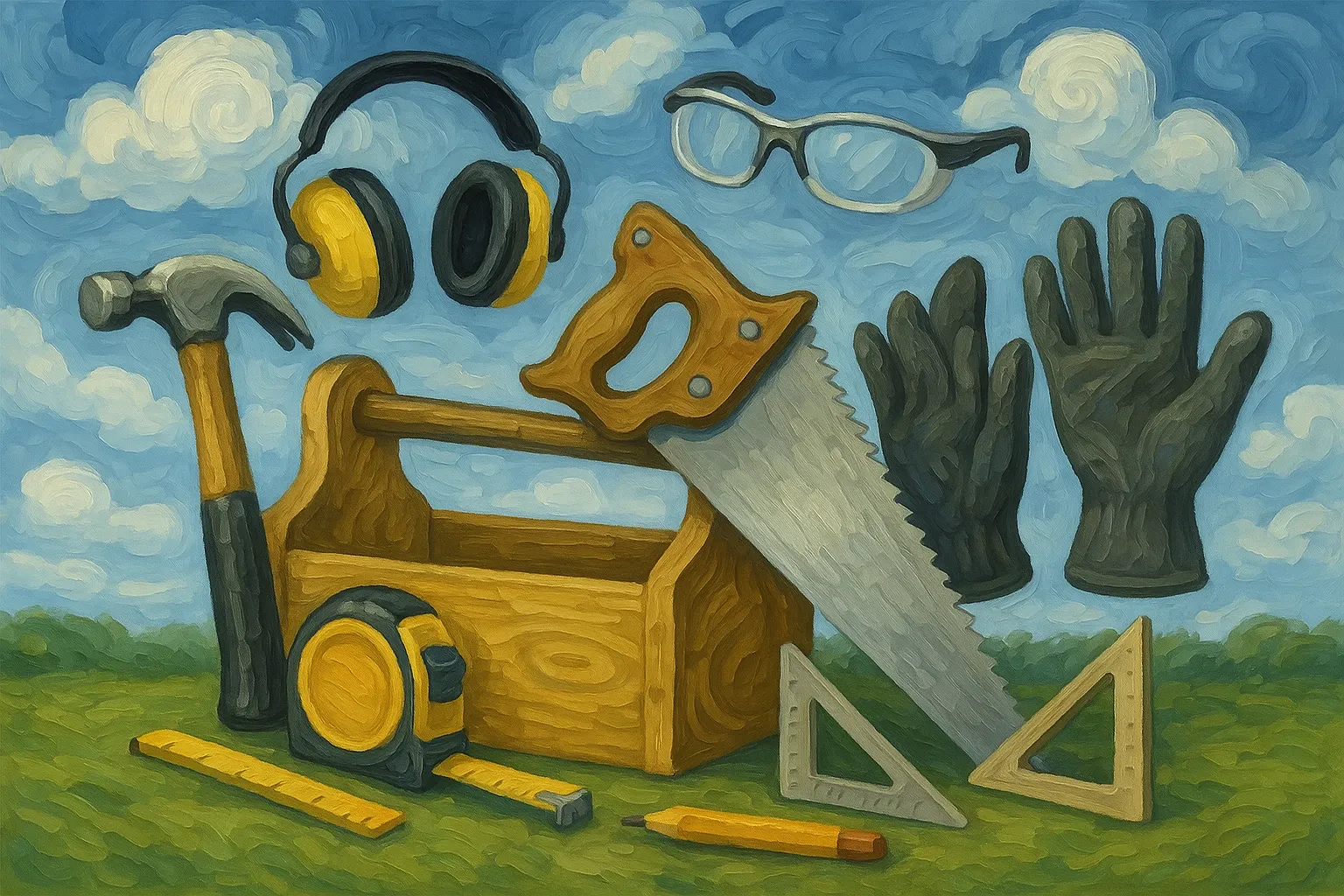
Before you cut your first board or drive your first screw, you need the right tools and safety gear. This isn’t about buying everything at once—it’s about starting with the essentials and building up over time.
Here’s exactly what I recommend for beginners:
- List the 5–10 most important beginner tools
- Compare starter sets from trusted brands
- Decide based on your budget and goals
- Buy or borrow a basic starter kit
- Organize tools in a toolbox or pegboard
- Get ANSI-rated safety glasses, hearing protection, and gloves
- Set aside a spot to store safety gear
- Pick up a 25-ft tape measure, speed square, and pencil
- Add a combo square or marking gauge if possible
Start here and you’ll avoid wasting money on tools you don’t need—or worse, buying cheap gear that won’t last.
2. Set Up Your Woodworking Space
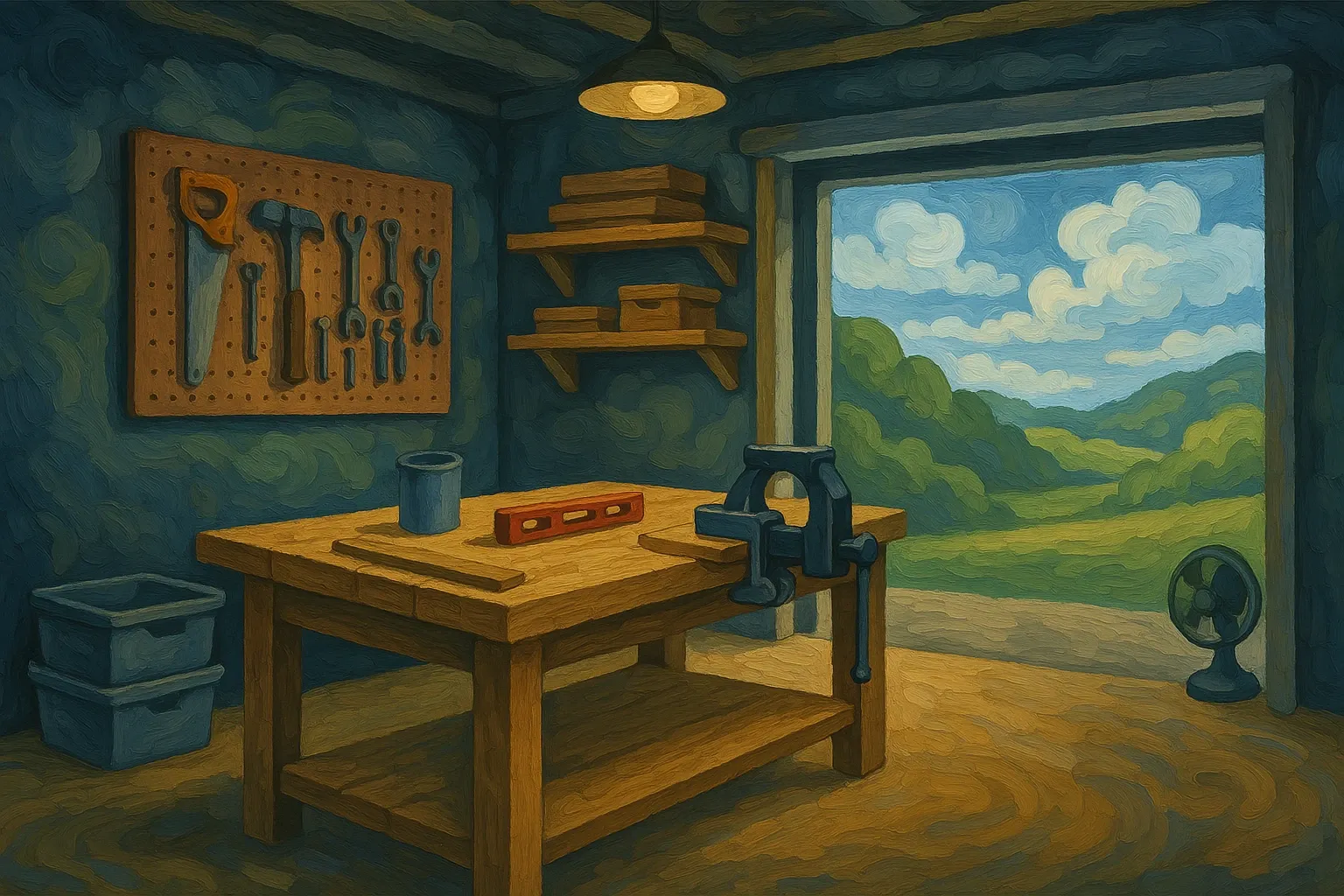
Even if all you’ve got is a garage corner or a backyard shed, you can create a functional, safe spot to work. It doesn’t have to be fancy—it just needs to work for you.
Here’s how to get your space dialed in:
- Choose a space (garage, shed, corner of a room)
- Clear it of clutter and clean the floor
- Make it off-limits to kids and pets
- Use or build a basic workbench or stable table
- Clamp down a surface if needed
- Check for level and stability
- Hang a pegboard or add shelves
- Use bins or drawers for screws and scraps
- Set up good lighting (overhead or task light)
- Add ventilation (window, fan)
- Ensure access to grounded outlets
Your setup doesn’t have to be perfect. What matters is that it’s safe, accessible, and ready to grow with you as your skills improve.
3. Learn the Basics and Build Your First Project
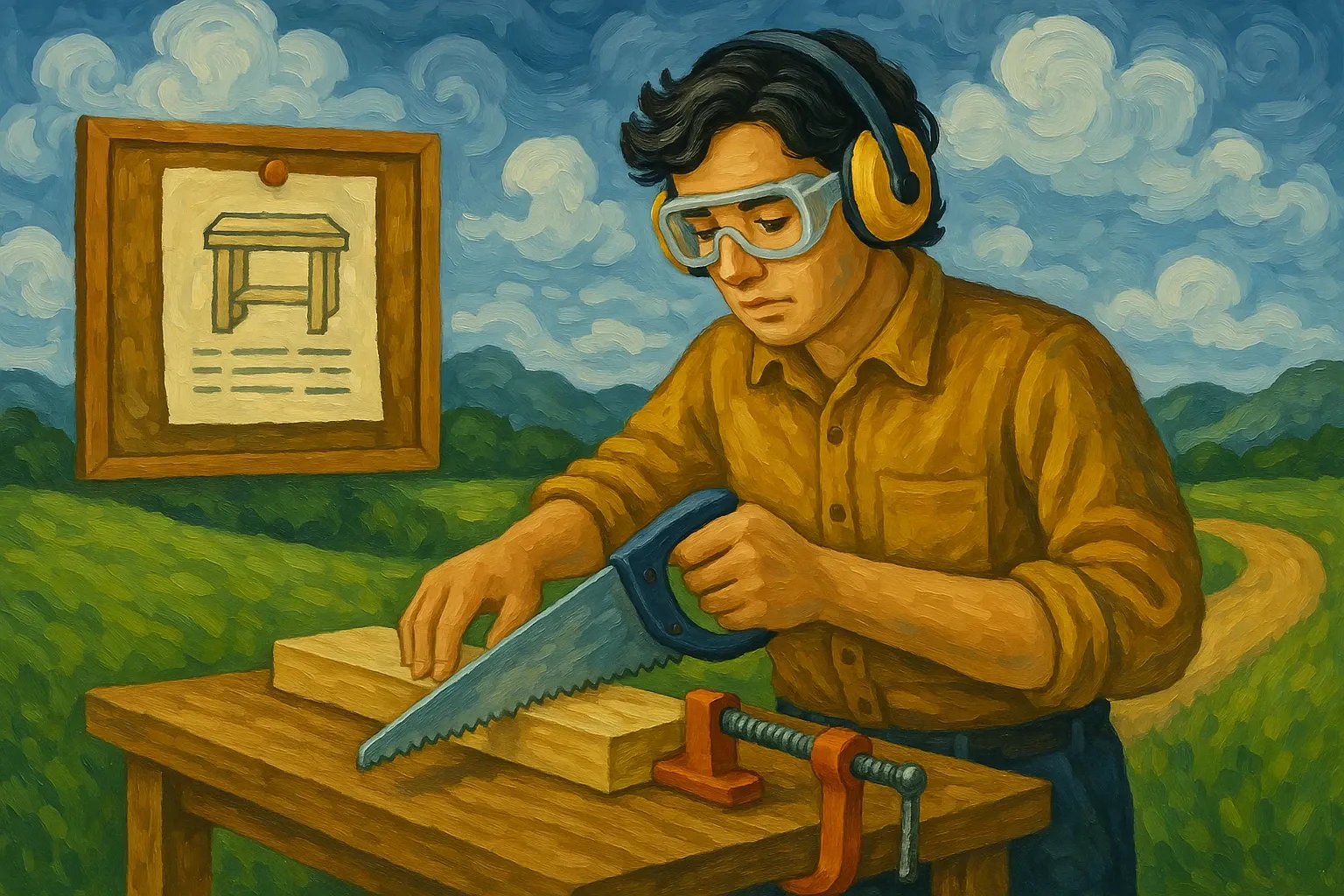
Now that you’ve got your tools and space ready, it’s time to build skills and get hands-on. Start small, stay safe, and focus on learning how your tools work.
Here’s how to get going without overthinking it:
- Read or watch shop safety basics
- Learn core safety rules (no loose clothing, focus, unplug tools)
- Practice cuts on scrap wood
- Drill holes and drive screws for control
- Measure, mark, and clamp with accuracy
- Choose a beginner-friendly project
- Gather materials and review the steps
- Follow the plan carefully, focusing on accuracy
- Study how to read plans and cut lists
- Highlight cuts and measurements before building
One solid project under your belt will build more confidence than any YouTube binge or trip to the hardware store.
Ready to Start Building?
You don’t need a full workshop or a massive budget to get started—just the right plan, some basic tools, and the willingness to learn by doing.
If you found this checklist helpful, I’d love to help you keep growing.
Visit TektonTravis.com to get more beginner guides, tool tips, and step-by-step project walk-throughs.
And while you're there, join my email list—you’ll get weekly woodworking tips, DIY project ideas, and real-world advice straight from the job site.
